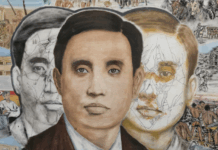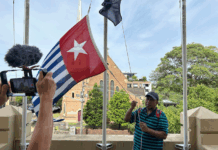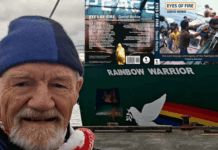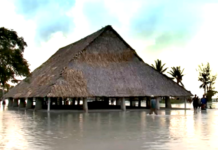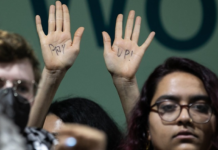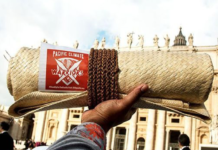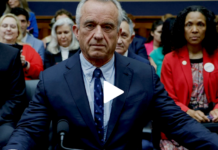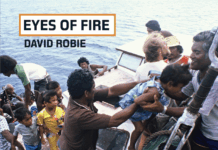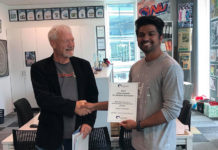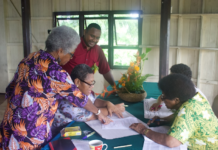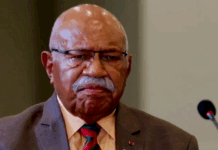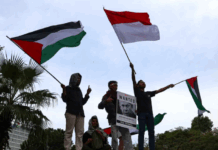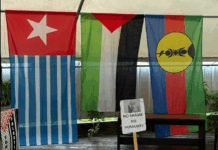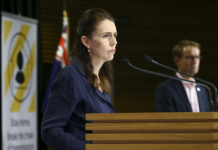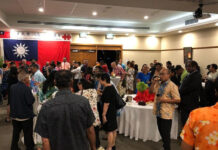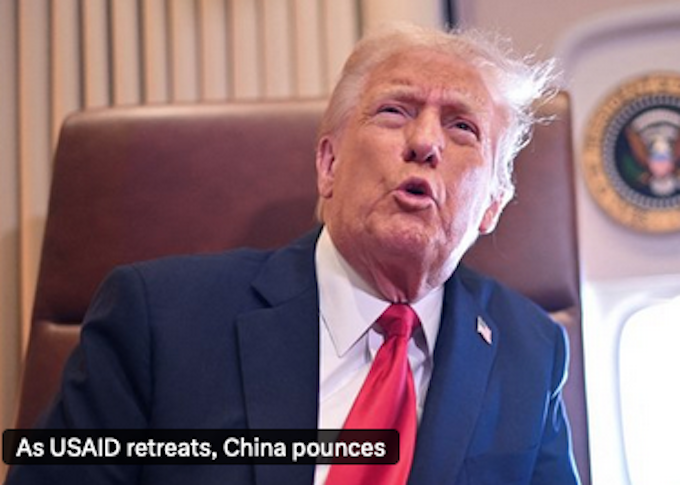
COMMENTARY: By Robin Davies
Much has been and much more will be written about the looming abolition of USAID.
It’s “the removal of a huge and important tool of American global statecraft” (Konyndyk), or the wood-chipping of a “viper’s nest of radical-left marxists who hate America” (Musk) or, more reasonably, the unwarranted cancellation of an organisation that should have been reviewed and reformed.
Commentators will have a lot to say, some of it exaggerated, about the varieties of harm caused by this decision, and about its legality.
- READ MORE: Trump’s foreign aid freeze throws independent journalism into chaos
- What will US aid cuts mean for the Pacific?
- Donald Trump’s foreign aid freeze leaves organisations in the Asia-Pacific region scrambling
- Other Pacific media freedom reports
Some will welcome it from a conservative perspective, believing that USAID was either not aligned with or acting against the interests of the United States, or was proselytising wokeness, or was a criminal organisation.
Some, often more quietly, will welcome it from an anti-imperialist or “Southern” perspective, believing that the agency was at worst a blunt instrument of US hegemony or at least a bastion of Western saviourism.
I want to come at this topic from a different angle, by providing a brief personal perspective on USAID as an organisation, based on several decades of occasional interaction with it during my time as an Australian aid official.
Essentially, I view USAID as a harried, hamstrung and traumatised organisation, not as a rogue agency or finely-tuned vehicle of US statecraft.
Peer country representative
My own experience with USAID began when I participated as a peer country representative in an OECD Development Assistance Committee (DAC) peer review of the US’s foreign assistance programme in the early 1990s, which included visits to US assistance programmes in Bangladesh and the Philippines, as well as to USAID headquarters in Washington DC.
I later dealt with the agency in many other roles, including during postings to the OECD and Indonesia and through my work on global and regional climate change and health programmes, up to and including the pandemic years.
An image is firmly lodged in my mind from that DAC peer review visit to Washington. We had had days of back-to-back meetings in USAID headquarters with a series of exhausted-looking, distracted and sometimes grumpy executives who didn’t have much reason to care what the OECD thought about the US aid effort.
It was a muggy summer day. At one point a particularly grumpy meeting chair, who now rather reminds of me of Gary Oldman’s character in Slow Horses, mopped the sweat from his forehead with his necktie without appearing to be aware of what he was doing. Since then, that man has been my mental model of a USAID official.
But why so exhausted, distracted and grumpy?
Precisely because USAID is about the least freewheeling workplace one could construct. Certainly it is administratively independent, in the sense that it was created by an act of Congress, but it also receives its budget from the President and Congress — and that budget comes with so many strings attached, in the form of country- or issue-related “earmarks” or other directives that it might be logically impossible to allocate the funds as instructed.
Some of these earmarks are broad and unsurprising (for example, specific allocations for HIV/AIDS prevention and treatment under the Bush-era PEPFAR program) while others represent niche interests (Senator John McCain once ridiculed earmarks pertaining to “peanuts, orangutans, gorillas, neotropical raptors, tropical fish and exotic plants”) — but none originates within USAID.
Informal earmarks calculation
I recall seeing an informal calculation showing that one could only satisfy all the percentage-based earmarks by giving most of the dollars several quite different jobs to do. A 2002 DAC peer review noted with disapproval some 270 earmarks or other directive provisions in aid legislation; by the time of the most recent peer review in 2022, this number was more like 700.
Related in part to this congressional micro-management of its budget — along with the usual distrust of organisations that “send” money overseas — USAID labours under particularly gruelling accountability and reporting requirements.
Andew Natsios — a former USAID Administrator and lifelong Republican who has recently come to USAID’s defence (albeit with arguments that not everybody would deem helpful) — wrote about this in 2010. In terms reminiscent of current events, he described the reign of terror of Lieutenant-General Herbert Beckington, a former Marine Corps officer who led USAID‘s Office of the Inspector General (OIG) from 1977 to 1994.
He was a powerful iconic figure in Washington, and his influence over the structure of the foreign aid programME remains with USAID today. … Known as “The General” at USAID, Beckington was both feared and despised by career officers. Once referred to by USAID employees as “the agency’s J. Edgar Hoover — suspicious, vindictive, eager to think the worst” …
At one point, he told the Washington Post that USAID’s white-collar crime rate was “higher than that of downtown Detroit.” … In a seminal moment in this clash between OIG and USAID, photographs were published of two senior officers who had been accused of some transgression being taken away in handcuffs by the IG investigators for prosecution, a scene that sent a broad chill through the career staff and, more than any other single event, forced a redirection of aid practice toward compliance.
Labyrinthine accountability systems
On top of the burdens of logically impossible programming and labyrinthine accountability systems is the burden of projecting American generosity. As far as humanly possible, and perhaps a little further, ways must be found of ensuring that American aid is sourced from American institutions, farms or factories and, if it is in the form of commodities, that it is transported on American vessels.
Failing that, there must be American flags. I remember a USAID officer stationed in Banda Aceh after the 2004 Indian Ocean tsunami spending a non-trivial amount of his time seeking to attach sizeable flags to the front of trucks transporting US (but also non-US) emergency supplies around the province of Aceh.
President Trump’s adviser Stephen Miller has somehow determined to his own satisfaction that the great majority (in fact 98 percent) of USAID personnel are donors to the Democratic Party. Whether or not that is true, let alone relevant, Democrat administrations have arguably been no kinder to USAID than Republican ones over the years.
Natsios, in the piece cited above, notes that The General was installed under Carter, who ran on anti-Washington ticket, and that there were savage cuts — over 400 positions — to USAID senior career service staffing under Clinton. USAID gets battered no matter which way the wind blows.
Which brings me back to necktie guy. It has always seemed to me that the platonic form of a USAID officer, while perhaps more likely than not to vote Democrat, is a tired and dispirited person, weary of politicians of all stripes, bowed under his or her burdens, bound to a desk and straitjacketed by accountability requirements, regularly buffeted by new priorities and abrupt restructures, and put upon by the ignorant and suspicious.
Radical-left Marxists and vipers probably wouldn’t tolerate such an existence for long. Who would? I guess it’s either thieves and money-launderers or battle-scarred professionals intent on doing a decent job against tall odds.
Robin Davies is an honorary professor at the Australian National University’s (ANU) Crawford School of Public Policy and managing editor of the Devpolicy Blog. He previously held senior positions at Australia’s Department of Foreign Affairs and Trade (DFAT) and AusAID. This article was first published by Devpolicy Blog.


